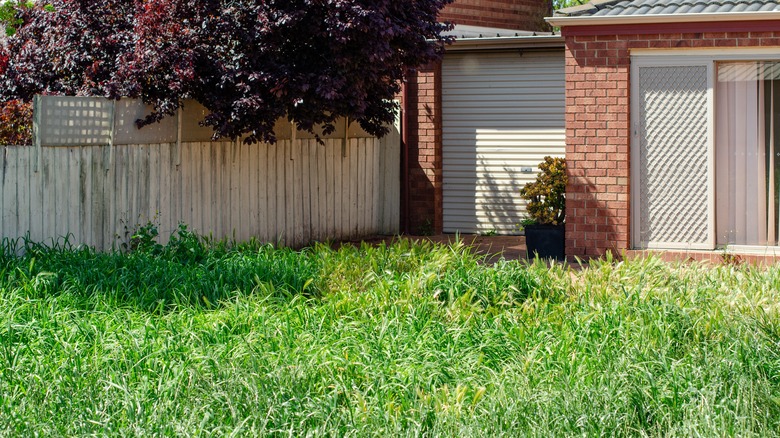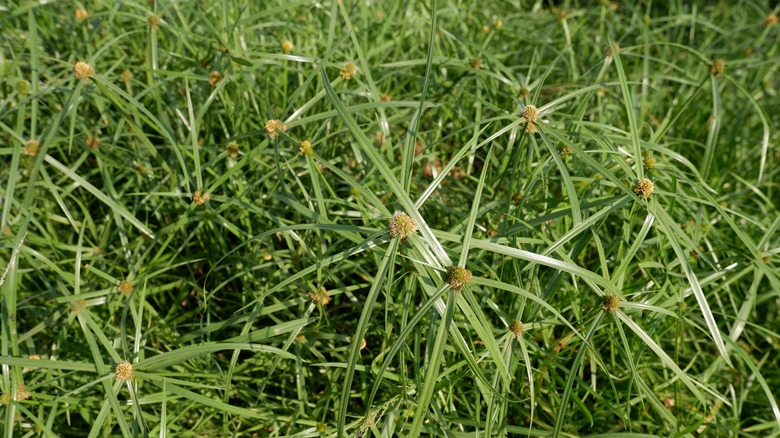The Yellow Nutsedge Look Alike That'll Wreak Havoc On Your Grass
We may receive a commission on purchases made from links.
If you're someone who loves a lush, green lawn, you've probably dealt with your fair share of annoying weeds. One of the most frustrating ones out there is yellow nutsedge, which can take over your yard if you're not careful. But did you know there's another weed that looks a lot like yellow nutsedge and can cause just as much trouble? Say hello (or maybe goodbye) to Kyllinga weed. This weed is often mistaken for yellow nutsedge because it has a similar appearance. However, Kyllinga weed brings its own unique set of problems. If left unchecked, it can spread fast, overtaking your grass and leaving you with an uneven lawn with thick patches in it.
Kyllinga, like yellow nutsedge, is a perennial, so it has the ability to come back year after year if you don't deal with it properly. It tends to thrive in areas with moist soil, so if your lawn is prone to overwatering (one of the bad habits that could be destroying your lawn) or poor drainage, you've essentially rolled out the welcome mat for this pesky weed. What makes it even more frustrating is that Kyllinga can form thick, dense mats, smothering your grass in the process. While yellow nutsedge tends to be a bit more spaced out, Kyllinga will create an unsightly carpet of weed that's tough to get rid of once it sets in.
Aside from just looking bad, Kyllinga weed is bad news for your lawn's health. While your grass is trying to grow and thrive, Kyllinga will compete with your lawn for nutrients, sunlight, and water.
How to get rid of Kyllinga weed
Now that you know the havoc Kyllinga can cause, let's talk about how to get rid of this weed. It can be a bit of a challenge, but with the right strategy, you can stop it from taking over your lawn. First, it's all about identifying the weed correctly. Kyllinga has narrow, grass-like leaves and small, spiky seed heads that are usually greenish in color. One thing that sets it apart from yellow nutsedge is the stem -– yellow nutsedge has a triangular stem, while Kyllinga's stem is round. Also, Kyllinga grows in dense mats, especially in areas where the grass is struggling, so keep an eye out for those patches in your lawn.
For smaller patches of Kyllinga, manual removal can work. Hand-pulling the weed can be effective if you're thorough about it, but you have to make sure you get the entire plant, roots and all. If any part of the root system remains, the weed can regenerate. A trowel or weeding tool can make it easier to get the roots out completely.
If you're dealing with a larger infestation, you might need to bring in the big guns -– herbicide. Look for a selective herbicide designed to target sedges and Kyllinga like the Halo 5WDG Select, which you can purchase on Amazon for $42. Be sure to follow the instructions carefully and apply the herbicide when the weed is actively growing, which is typically in the late spring or early summer for the best results.

